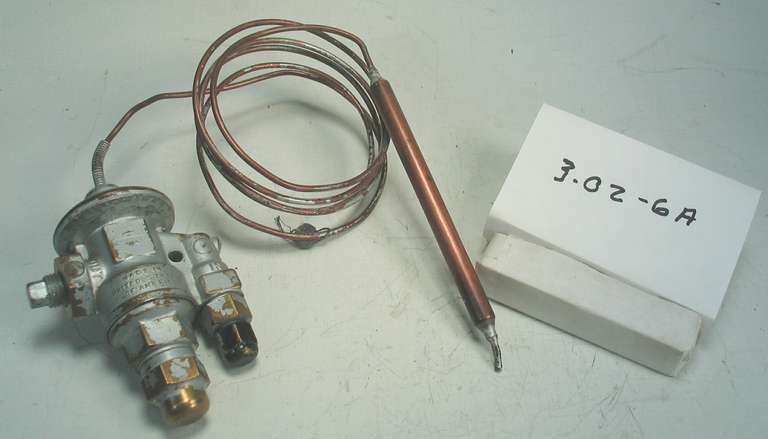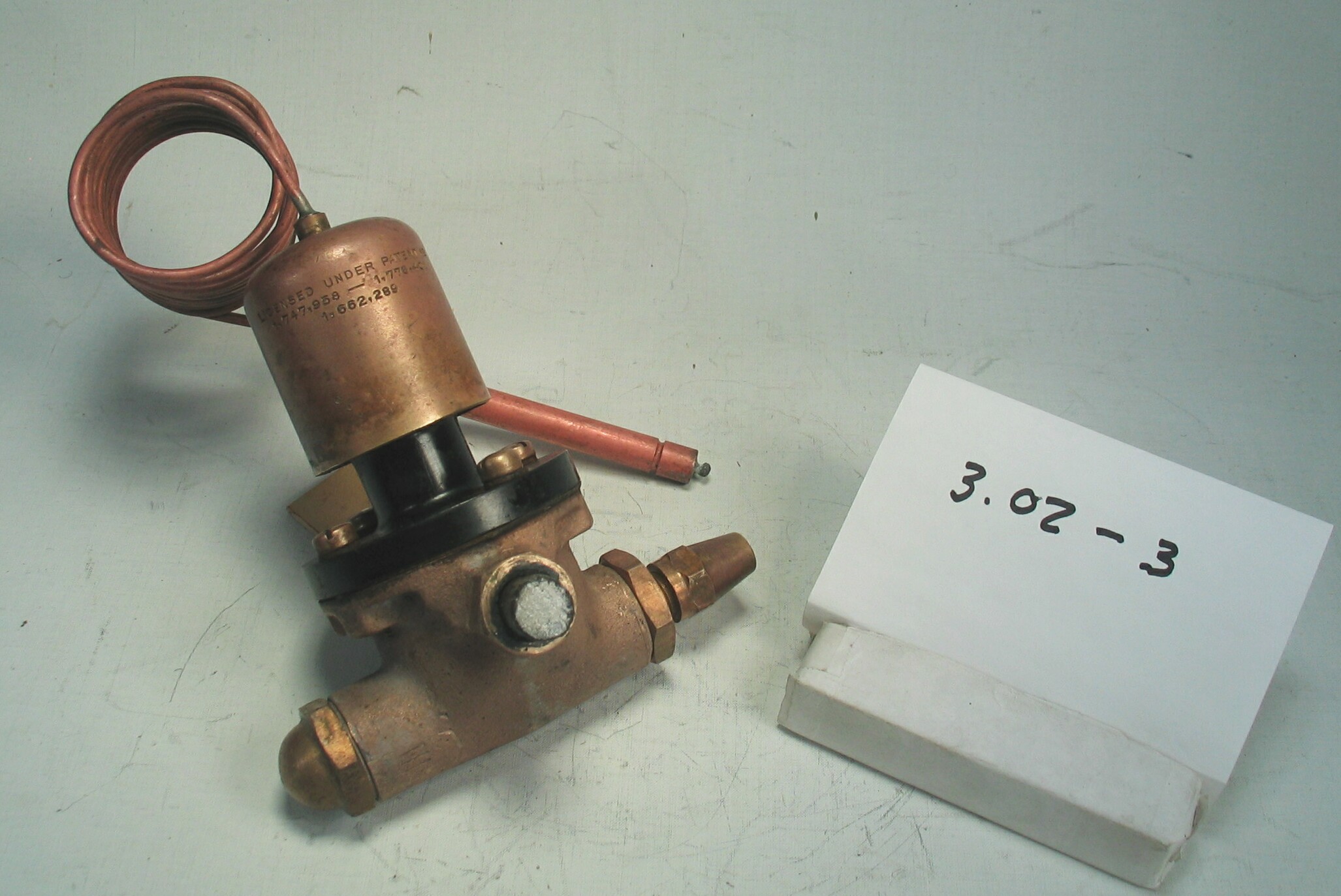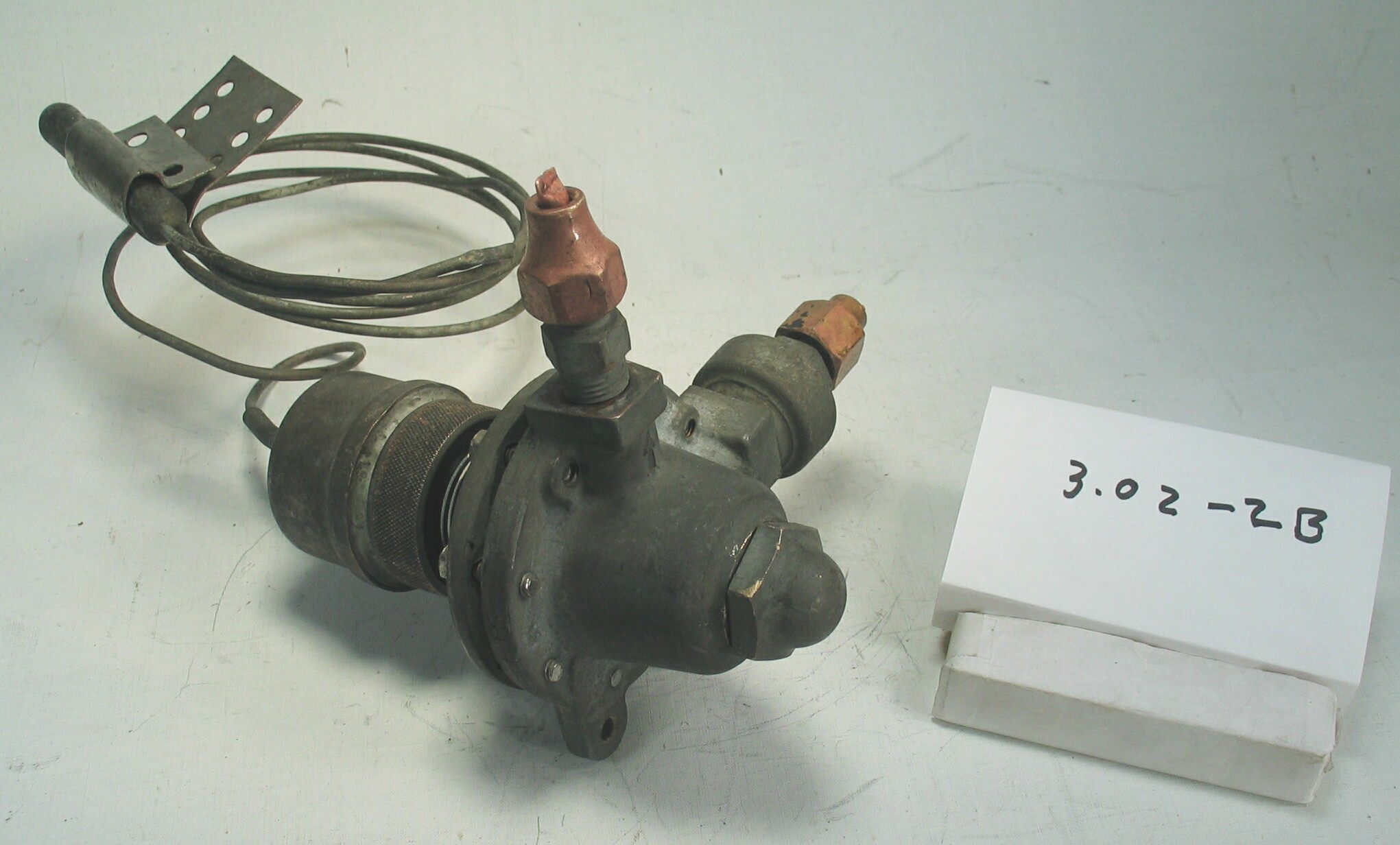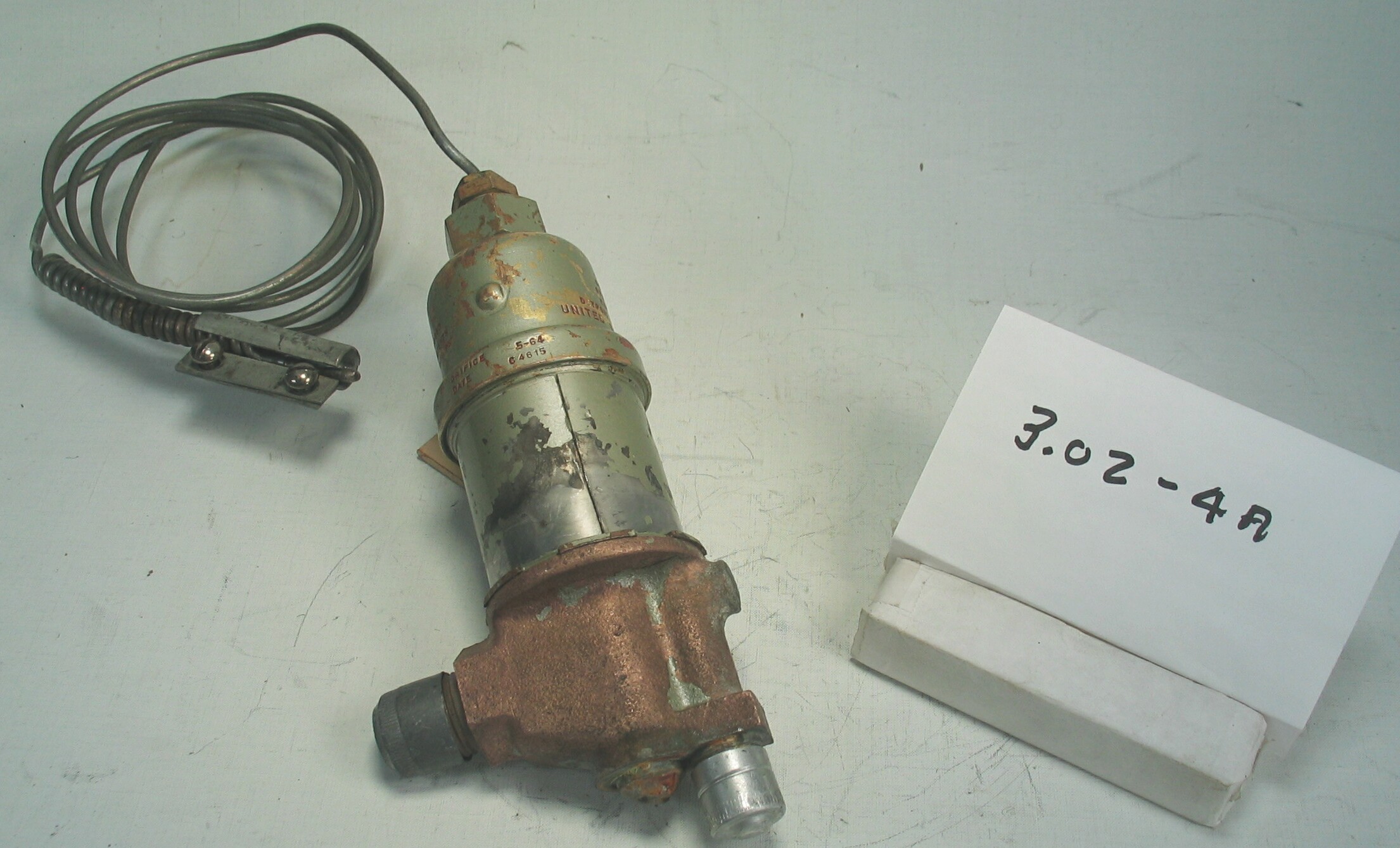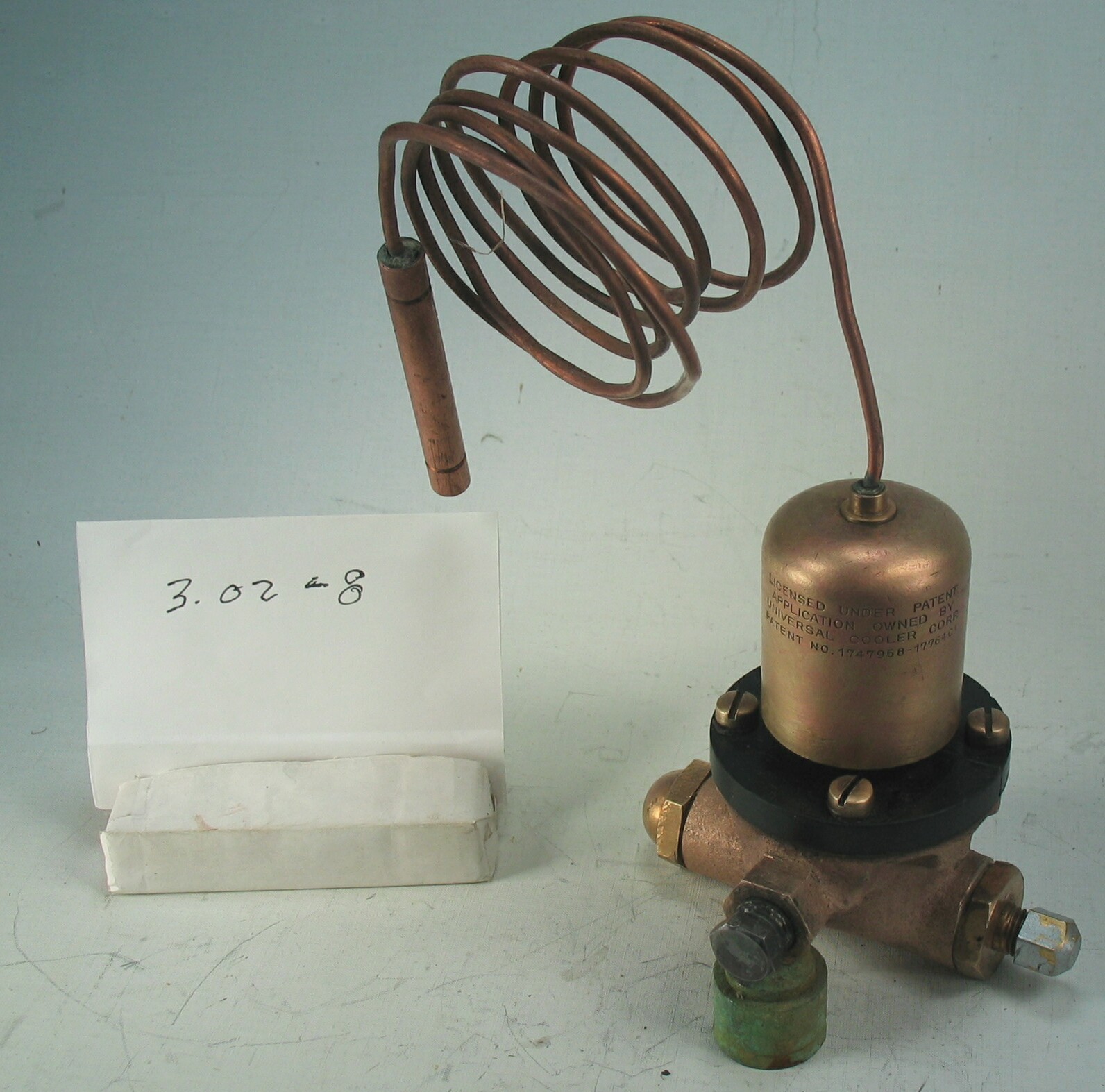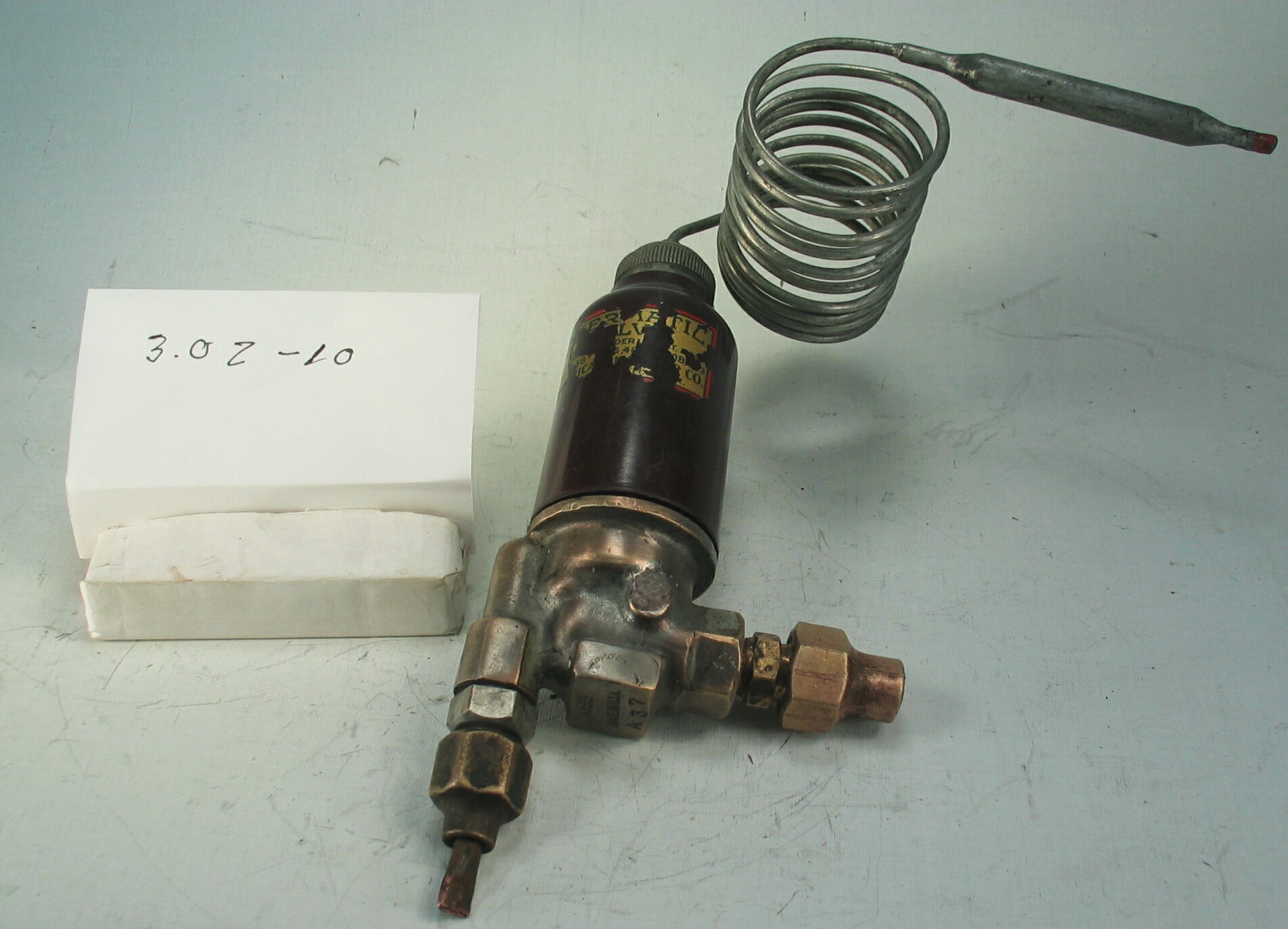3.02-6A: Automatic Products 1945 Thermostatic Expansion Valve
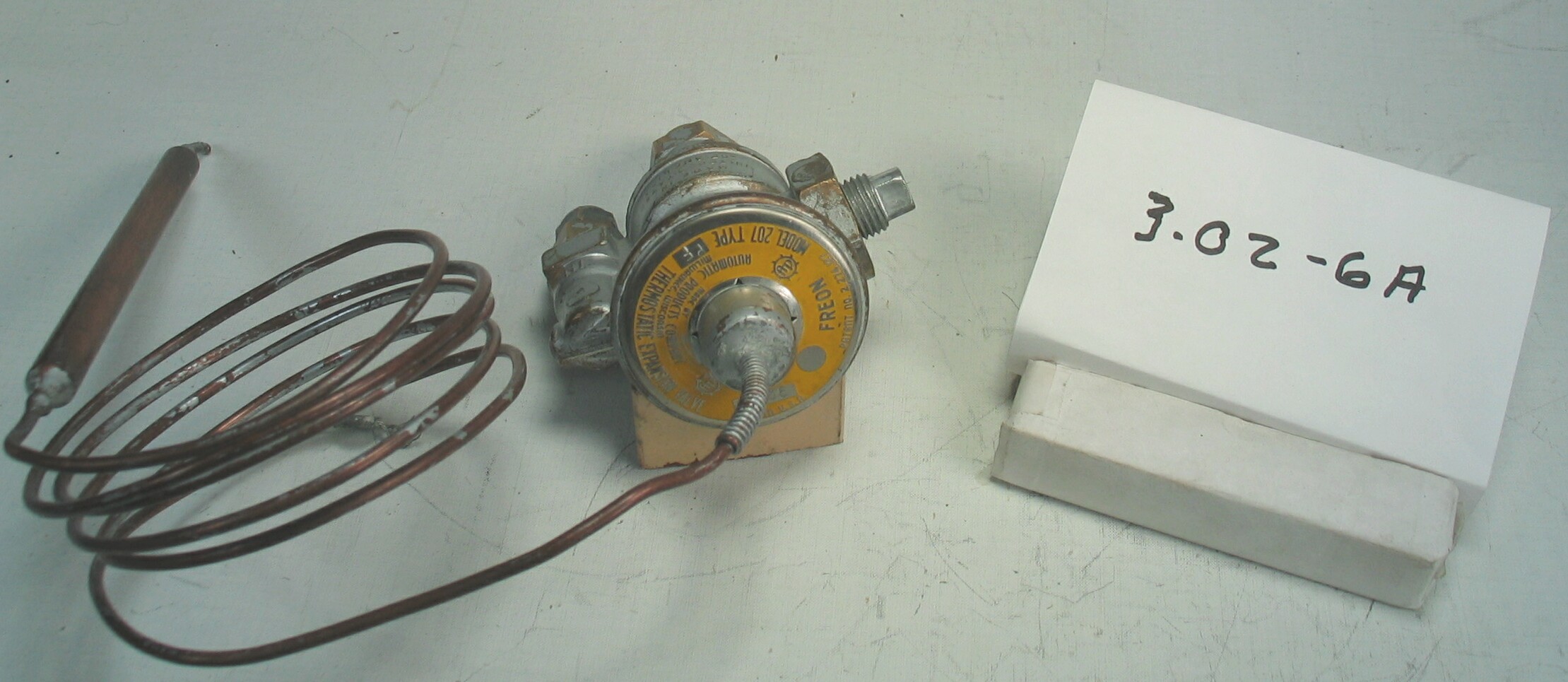
| HHCC Accession No. 2006.066 | HHCC Classification Code: 3.02-6A |
|---|
Description:
An amazingly compact, mid capacity, mid to late 20th century, thermostatic expansion valve designed to meet the needs of an increasingly wide range of packaged, compact, commercial refrigeration applications, for methyl chloride and Freon 12 refrigerants, Model 207, Automatic Products Co., Mil., Circa 1945 [1 of a set of 2, see ID#191]
Group:
3.02 Refrigerant Flow Controls - Commercial
Make:
Automatic Products [AP]
Manufacturer:
Automatic Products Co., Mil.
Model:
AP207, type PF
Serial No.:
Body stampings FC; GP29
Size:
3 x 2 x 5in.h
Weight:
1.5 lbs.
Circa:
1945
Rating:
Exhibit, education, and research quality, illustrating the engineering design, construction, and operating principles, of a new generation of compact thermostatic expansion valves, for the period, marketed for a new generation of compact, packaged, mid 20th century commercial refrigeration equipment.
Patent Date/Number:
2274127 [1942]
Provenance:
From York County (York Region) Ontario, once a rich agricultural hinterlands, attracting early settlement in the last years of the 18th century. Located on the north slopes of the Oak Ridges Moraine, within 20 miles of Toronto, the County would also attract early ex-urban development, to be come a wealthy market place for the emerging household and consumer technologies of the early and mid 20th century.
This artifact was discovered in the 1950’s in the used stock of T. H. Oliver, Refrigeration and Electric Sales and Service, Aurora, Ontario, an early worker in the field of agricultural, industrial and consumer technology.
Type and Design:
Power element with 5 ft capillary line and 5 in. bulb .035 in. orifice for Freon 12 inlet screen
Construction:
cast brass body with aluminium overcoat
Material:
Special Features:
Accessories:
Capacities:
Performance Characteristics:
Operation:
Control and Regulation:
Targeted Market Segment:
Consumer Acceptance:
Merchandising:
Market Price:
Technological Significance:
Smaller than the Detroit Lubricator model 673 [see ID#187 and 188] in similar capacity range, this valve would set a new standard of compact, precision operation for the Canadian market place. Engineered by Automatic Products it would help to make possible a new generation of packaged, compact, commercial refrigeration appliances for confectioneries, food stores and similar applications.
In response to the buoyant market for TX valve technology a number of manufacturers, including Detroit Lubricator, Mayson, Automatic Products, Sporlan and Danfoss, among others entered the field in the late 1930’s and 40’s. They produced a remarkable range of design configurations and capacities for different refrigerants and cooling applications - in low temperature, commercial and air conditioning ranges. The AP207, generally representative of the period, was engineered with a range of interchangeable orifices, variously for methyl chloride, F12 and sulfur dioxide refrigerants, for low, commercial and air conditioning applications, over the range of 1/4, 1/3, 1/2, and 1 ton capacities.
Industrial Significance:
With 60” capillary line and 3/8” bulb, wide range of orifice sizes, adjustable superheat feature and built in liquid line screen, this compact valve would help to make possible an explosion of refrigeration and air conditioning applications in the latter part of the 20th century.
Socio-economic Significance:
The AP207 thermostatic expansion valve along with the Detroit Lubricator 673 would help put convenient, reliable and affordable commercial refrigeration and air conditioning equipment in a broad range of small commercial applications from farm to food store and restaurants across Canada. As a consequence, the range and quality of foods Canadians would enjoy, year-round was beginning to change and change significantly, even in the pre World War II years.
The socio-cultural significance of the impact of the unobtrusive, thermostatic expansion valve on life in Canada, throughout the latter part of the 20th century, would be hard to over-estimate. It would become the quintessential, automated refrigerant flow regulating device for most medium and larger commercial refrigeration applications, found in confectioneries, food stores and ware houses. It would help to make possible the wide array of foods and confectionery products Canadians would come to enjoy, as part of the late 20th century Canadian life experience.
Socio-cultural Significance:
Donor:
G. Leslie Oliver, The T. H. Oliver HVACR Collection
HHCC Storage Location:
Tracking:
Bibliographic References:
Notes:
Related Reports:
- CMX02, CMX04 catalogues Item R12

